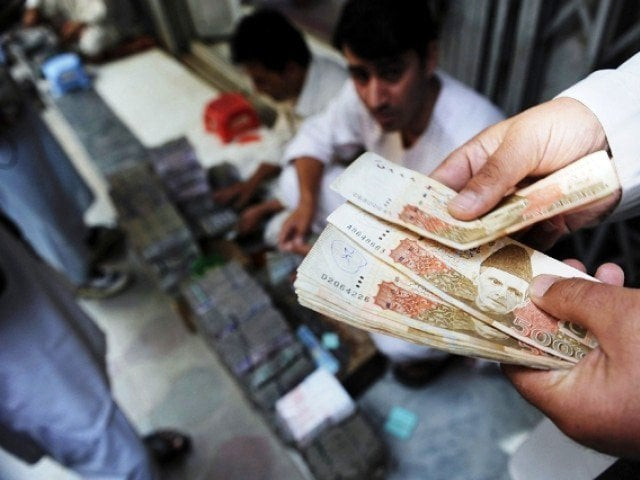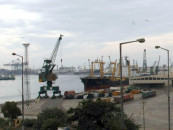Budget deficit widens on unrealistic revenue, expense forecasts
Gap between income and expenditure rises to Rs1.2tr, prompting heavy borrowing

Gap between income and expenditure rises to Rs1.2tr, prompting heavy borrowing. PHOTO: AFP
Owing to the higher-than-targeted budget deficit on the back of heavy spending, the federal government heavily borrowed from July through March, exceeding the annual domestic borrowing limit.
It also nearly touched the annual external borrowing target, consuming 94% of the ceiling in the first nine months (July-March).
In July-March FY17, the budget deficit stood at Rs1.238 trillion or 3.7% of gross domestic product, according to a summary of the Consolidated Fiscal Operations released by the Ministry of Finance.
The deficit is close to the annual target of Rs1.276 trillion or 3.8% of GDP. Expenditures, mainly current, overshot the estimates while revenues remained far below the target.
This highlights that the finance ministry has failed to manage its books according to the plan approved by the National Assembly in June last year.
Details of revenues and expenditures of the federal and four provincial governments show that the finance ministry will have to release a huge supplementary budget this year, although the Supreme Court has barred the ministry from doing that without prior approval of the federal cabinet.
Provinces fared far better than the federal government and remained by and large on track except for Khyber-Pakhtunkhwa that recorded a deficit instead of creating surplus. Other three provinces cumulatively recorded a cash surplus of Rs137 billion for the federal government, which restricted the overall deficit to 3.7% of GDP.
Pakistan has already informed the International Monetary Fund (IMF) that the overall budget deficit will surge to Rs1.373 trillion or 4.1% of GDP by the end of this fiscal year.

However, the nine-month data suggests that even the revised 4.1% target will be missed by a wide margin and the IMF’s projections of 4.5% or Rs1.5 trillion will be true.
Of late, the finance ministry has come under pressure to release funds to the power sector as the allocation of Rs118 billion for power subsidies appears highly understated.
This year’s higher deficit will also affect next fiscal year’s deficit target and the government will have no choice but to set the new target at around 4% of GDP.
Federal operations
Against the annual revenue estimate of Rs3.956 trillion, the collection in the first nine months stood at Rs2.5 trillion or 62% of the target, according to the summary.
The shortfall was on both tax and non-tax revenue sides. The Federal Board of Revenue (FBR) received Rs2.26 trillion or 62% of the annual target. Other taxes amounted to Rs203 billion or 60% of the target.
The government took a major hit in non-tax revenue collection, which stood at Rs402 billion or just 42% of the annual target.
Unlike the impression that the shortfall was mainly because of less receipts of the Coalition Support Fund (CSF) from the US, the receipts on account of interest payments by public sector enterprises, dividends, State Bank of Pakistan (SBP) profit and royalty on oil and gas also remained significantly low.
The central bank gave Rs144 billion in profit, which was half of its annual target. CSF receipts were Rs64.4 billion or 37% of the annual target. Mark-up receipts stood at 15% of the target and dividends at only 25% of the target.
Total expenditure stood at Rs2.8 trillion or 63% of the annual target. However, the major slip was on account of current expenditures that increased to Rs2.5 trillion or 72% of the annual target.
In this category, the servicing of domestic debt consumed Rs1.1 trillion or 81% of the annual allocation. The external debt servicing amounted to Rs84.6 billion or 75% of the annual allocation.
Development expenditures amounted to just Rs327 billion or 41% of the annual allocation - a direct result of higher current expenditures.
The federal government booked Rs1.4 trillion budget deficit and in order to fill the gap it borrowed Rs1.245 trillion from the domestic market. Domestic borrowings were 119% of the annual target.
Similarly, it obtained a net Rs220 billion in foreign loans for budget financing, which was 94% of the annual target.
Published in The Express Tribune, May 7th, 2017.
Like Business on Facebook, follow @TribuneBiz on Twitter to stay informed and join in the conversation.


















COMMENTS
Comments are moderated and generally will be posted if they are on-topic and not abusive.
For more information, please see our Comments FAQ